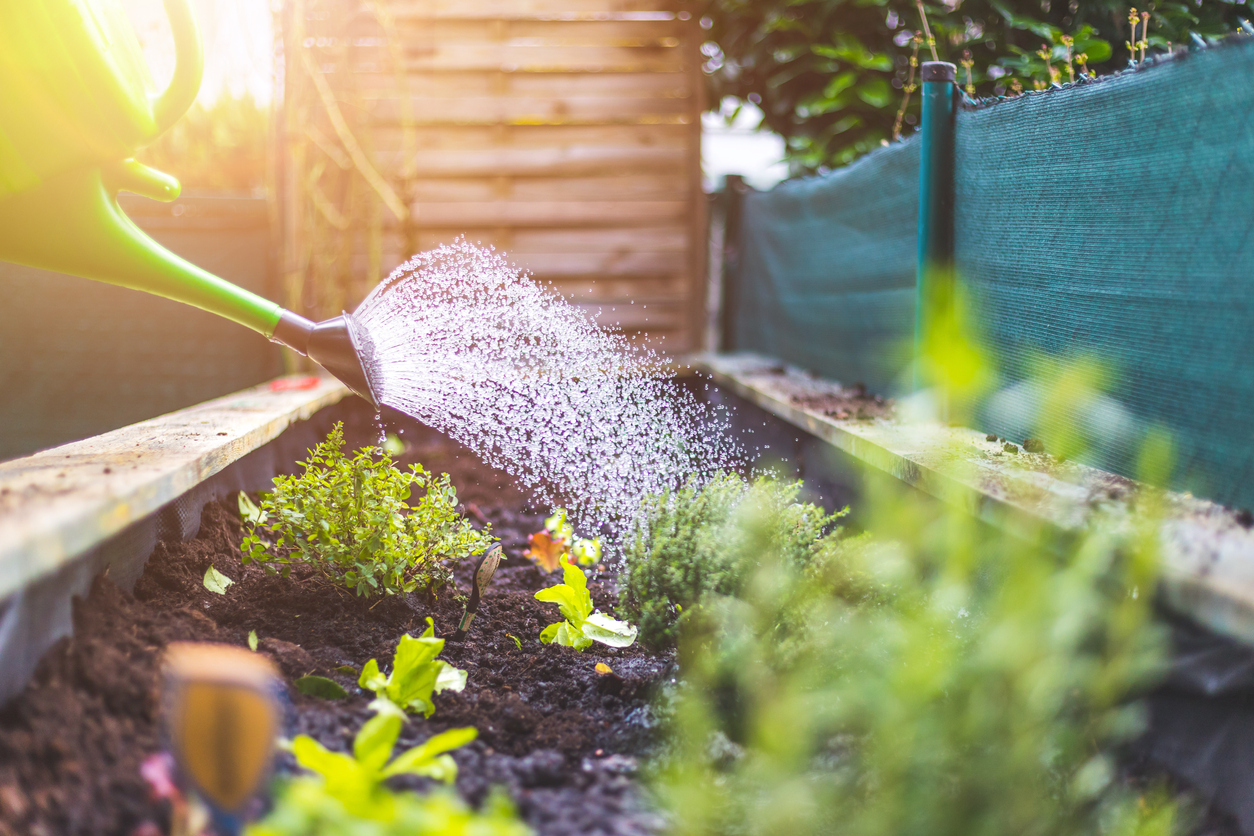I’ve always felt that one of the joys of a garden is that moment when you walk outside and get some fresh herbs to cook with or when you see a few ripe tomatoes on the vine and decide you’ll make gazpacho for dinner. Exciting as that is, it can feel a bit overwhelming when you’re figuring out where to begin. I’ve been tending a small kitchen garden right outside my back door for a few years now, but it would have been helpful in the beginning if someone had told me the best herbs and veggies to plant, so I didn’t go planting watermelons with my herbs the first year.
What is a kitchen garden? As you might guess, these vegetable gardens are usually close to your kitchen. They tend to be on the smaller side, sometimes even as small as twenty square feet. Raised bed kitchen gardens are probably most common, but there’s no rule that you can’t plant them directly in the ground. And as the name implies, kitchen gardens are primarily designed so you can turn your weekly grocery list into a weekly garden vegetable list. What does that mean?
Discover 10 top tips for growing, harvesting, and enjoying fruits, vegetables, herbs and more from your home garden—when you access the FREEBIE How to Grow a Vegetable Garden, right now!
Planning a garden vegetable list for a guaranteed harvest (and pure culinary pleasure)
The goal of a kitchen garden is to have a supply of fresh herbs and vegetables that you can use for meals throughout the growing season. These aren’t the gardens that give you so many cucumbers that you’re making enough pickles to last through the apocalypse. But if you want a few jars of pickles, or a tasty eggplant and tomato caponata, this is the style of garden for you.<
What should go on your garden vegetable list? I like to mix herbs and vegetables for two reasons. For one thing, I use a lot of herbs in my kitchen, so it just makes sense. But some herbs, like basil and chives, deter pests, while the flowers of rosemary and sage attract bees. Plus they grow all season long, so you can grab a handful of parsley for a dish and feel confident that you’ll have plenty more next week.
Speaking of lots of produce, I also like growing vegetables that I can harvest more than once. Pole beans are a good example, as they actually grow more when you pick them. Some varieties will give you a month or even two of harvests.
One other thing to think about when you make your kitchen garden vegetable list is companion planting. Certainly, you don’t have to plant everything together, but if you’re confined to a small space, it’s helpful to have plants that complement each other. Eggplants and peppers are both in the nightshade family, so they have similar nutrient requirements, which, incidentally, make pole beans a good companion for them.
Your one-stop garden vegetable list for a successful kitchen garden
Here’s what I have on my list. These herbs and vegetables all grow well together.
Herbs
- Rosemary – Attracts pollinators
- Parsley – Attracts the parsleyworm caterpillar, which will turn into a stunning black swallowtail butterfly
- Cilantro – Deters aphids and spider mites
- Basil – Deters the tomato hornworm and smells amazing
- Sage – Attracts pollinators, deters bean beetles
- Chives – Deter aphids and attract bees
Vegetables
- Tomato – Can be prolific producers
- Pole beans – Provide nitrogen to the soil and will produce for up to two months
- Lettuce – Good for planting between other vegetables
- Cucumbers – Grow quickly and they’re low maintenance
- Chard – Cold-resistant and you can get several harvests from each plant
- Japanese Eggplant – The more you harvest, the more the plant will produce
- Peppers – They are easy to grow and resist most garden pests
- Onions – Easy to grow, and repel some garden pests
- Garlic – Easy to grow, and who doesn’t love garlic?
There’s certainly more you can grow in a small kitchen garden, but I’ve found this list gives me a regular harvest and a decent variety of produce. Best of all, it’s all lovely for cooking up a fantastic dinner.
What’s on your list of favorite vegetables for a small kitchen garden? I’d love to read about your experience in the comments below.
Discover 10 top tips for growing, harvesting, and enjoying fruits, vegetables, herbs and more from your home garden—when you access the FREEBIE How to Grow a Vegetable Garden, right now!
